
Piccadilly Circus is a road junction and public space of London's West End in the City of Westminster. It was built in 1819 to connect Regent Street with Piccadilly. In this context, a circus, from the Latin word meaning "circle", is a round open space at a street junction.

The Noël Coward Theatre, formerly known as the Albery Theatre, is a West End theatre in St. Martin's Lane in the City of Westminster, London. It opened on 12 March 1903 as the New Theatre and was built by Sir Charles Wyndham behind Wyndham's Theatre which was completed in 1899. The building was designed by the architect W. G. R. Sprague with an exterior in the classical style and an interior in the Rococo style.

The Gielgud Theatre is a West End theatre, located on Shaftesbury Avenue, at the corner of Rupert Street, in the City of Westminster, London. The house currently has 994 seats on three levels.

The Theatre Royal Haymarket is a West End theatre on Haymarket in the City of Westminster which dates back to 1720, making it the third-oldest London playhouse still in use. Samuel Foote acquired the lease in 1747, and in 1766 he gained a royal patent to play legitimate drama in the summer months. The original building was a little further north in the same street. It has been at its current location since 1821, when it was redesigned by John Nash. It is a Grade I listed building, with a seating capacity of 888. The freehold of the theatre is owned by the Crown Estate.
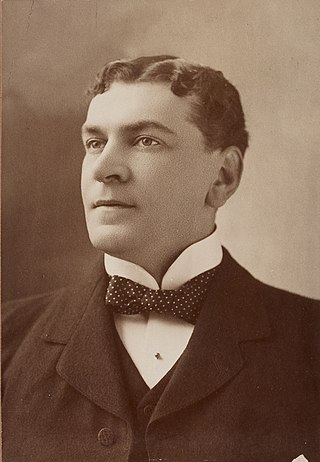
Arthur Bourchier was an English actor and theatre manager. He married and later divorced the actress Violet Vanbrugh.

The Royal Court Theatre is a theatre located at 1 Roe Street in Liverpool, England. The current Royal Court Theatre was opened on 17 October 1938, after fire destroyed its predecessor. It was rebuilt in Art Deco style and soon became Liverpool's premier theatre. The interior of the building has a nautical theme, in line with Liverpool's seafaring traditions. The design of the basement lounge was based on the Cunard liner Queen Mary until its conversion into the Studio space during renovations. There are three viewing levels within the main auditorium: the Stalls, the Grand Circle and the Balcony.

The Theatre Royal is a historic theatre, a Grade I listed building situated on Grey Street in Newcastle upon Tyne.

The Gillian Lynne Theatre is a West End theatre located on the corner of Drury Lane and Parker Street in Covent Garden in the London Borough of Camden. The Winter Garden Theatre formerly occupied the site until 1965. On 1 May 2018, the theatre was officially renamed the Gillian Lynne Theatre in honour of choreographer Gillian Lynne. It is the first theatre in the West End of London to be named after a non-royal woman.
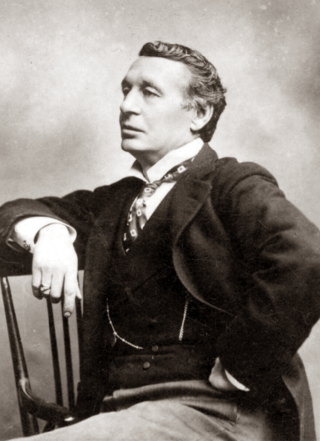
Sir Charles Wyndham, néCharles Culverwell, was an English actor and theatre proprietor. Wyndham's Theatre in London is named after him, and he also built the New Theatre nearby.
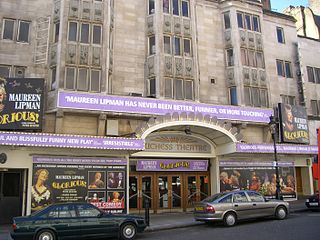
The Duchess Theatre is a West End theatre in the City of Westminster, London, located in Catherine Street near Aldwych.

Wyndham's Theatre is a West End theatre, one of two opened by actor/manager Charles Wyndham. Located on Charing Cross Road in the City of Westminster, it was designed c.1898 by W. G. R. Sprague, the architect of six other London theatres between then and 1916. It was designed to seat 759 patrons on three levels; later refurbishment increased this to four seating levels. The theatre was Grade II* listed by English Heritage in September 1960.

The Lyceum Theatre is a West End theatre located in the City of Westminster, on Wellington Street, just off the Strand in central London. It has a seating capacity of 2,100. The origins of the theatre date to 1765. Managed by Samuel Arnold, from 1794 to 1809 the building hosted a variety of entertainments including a circus produced by Philip Astley, a chapel, and the first London exhibition of waxworks by Madame Tussauds. From 1816 to 1830, it served as The English Opera House. After a fire, the house was rebuilt and reopened on 14 July 1834 to a design by Samuel Beazley. The building is unique in that it has a balcony overhanging the dress circle. It was built by the partnership of Peto & Grissell. The theatre then played opera, adaptations of Charles Dickens novels and James Planché's "fairy extravaganzas", among other works.
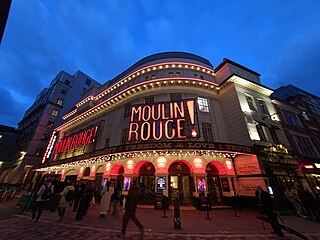
The Piccadilly Theatre is a West End theatre located at the junction of Denman Street and Sherwood Street, near Piccadilly Circus, in the City of Westminster, London. It opened in 1928.

The Shaftesbury Theatre was a theatre in central London, England, between 1888 and 1941. It was built by John Lancaster for his wife, Ellen Wallis, a well-known Shakespearean actress. The theatre was designed by C. J. Phipps and built by Messrs. Patman and Fotheringham at a cost of £20,000 and opened with a production of As You Like It on 20 October 1888.

Violet Augusta Mary Barnes, known professionally as Violet Vanbrugh, was an English actress with a career that spanned more than 50 years. Despite her many successes, her career was overshadowed by that of her more famous sister, Dame Irene Vanbrugh.

The Globe was a Victorian theatre built in 1868 and demolished in 1902. It was the third of five London theatres to bear the name, following Shakespeare’s Bankside house, which closed in 1642, and the former Rotunda Theatre in Blackfriars Road, which for a few years from 1833 was renamed the Globe. The new theatre was also known at various times as the Royal Globe Theatre or Globe Theatre Royal. Its repertoire consisted mainly of comedies and musical shows.
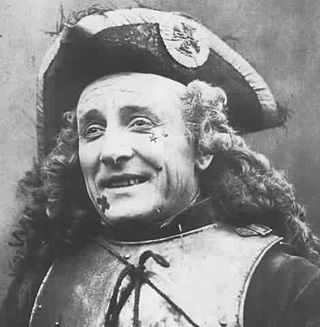
Frank Wyatt was an English actor, singer, theatre manager and playwright.

Frederic Lewis Tuffley, better known by his stage name, Eric Lewis, was an English comedian, actor and singer. In a career spanning five decades, he starred in numerous comedies and in a few musical comedy hits, but he is probably best remembered today as the understudy to George Grossmith in the Gilbert & Sullivan comic operas of the 1880s who left the D'Oyly Carte Opera Company just in time to give Henry Lytton his big break.

The Harold Pinter Theatre, known as the Comedy Theatre until 2011, is a West End theatre, and opened on Panton Street in the City of Westminster, on 15 October 1881, as the Royal Comedy Theatre. It was designed by Thomas Verity and built in just six months in painted (stucco) stone and brick. By 1884 it was known as simply the Comedy Theatre. In the mid-1950s the theatre underwent major reconstruction and re-opened in December 1955; the auditorium remains essentially that of 1881, with three tiers of horseshoe-shaped balconies.
Tim Goodchild is a set and costume designer from Great Britain.






















